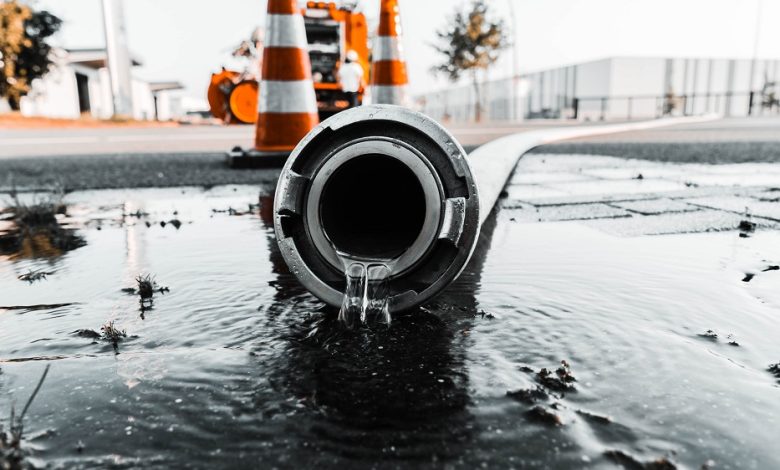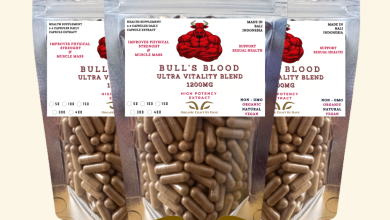Water Extraction Techniques: Essential Methods for Effective Damage Control

Water damage can be one of the most overwhelming challenges a homeowner or business owner can face. Whether caused by heavy rainfall, burst pipes, or a natural disaster, water intrusion can result in severe damage to your property. Quick and efficient water extraction is crucial in limiting the extent of the damage and ensuring the property can be restored to its original state. This article will delve into various Water extraction techniques used by professionals to handle water damage situations, exploring the equipment, methods, and processes involved.
The Importance of Quick Water Extraction
Water damage, regardless of its source, can spread quickly if not addressed promptly. The longer the water sits, the greater the chances of structural damage, mold growth, and deterioration of personal belongings. Immediate water extraction is essential for minimizing the impact of water damage, particularly in situations where flooding or leaks have occurred. Speedy removal of water also reduces the risk of long-term issues like weakened foundations and rotting wood, which can be costly to repair. It is important to act fast, which is why water extraction is often the first step in a water damage restoration plan.
Types of Water Damage and Their Effect
Water damage can be categorized into three levels based on its contamination level. Clean water, coming from a source such as a broken pipe or a sink overflow, poses the least risk. Gray water, typically sourced from appliances like washing machines or dishwashers, contains contaminants that require additional precautions when handled. Black water, which may come from sources such as sewer backups or flooding, is the most dangerous, as it can contain bacteria, viruses, and other harmful pathogens. The level of contamination determines the equipment and methods used for water extraction, as well as the need for sanitization and decontamination.
It is essential to assess the water source and severity of contamination before deciding on the right extraction technique. Professional water damage restoration specialists are trained to evaluate the situation carefully and choose the appropriate tools and treatments for each type of water damage.
Water Extraction Equipment Used by Professionals
Professional water extraction involves a variety of specialized tools designed to remove standing water quickly and efficiently. One of the most common pieces of equipment used for large-scale water removal is a submersible pump. These pumps are ideal for extracting large amounts of water, especially from basements or flooded rooms. Submersible pumps work by sucking up water from the affected area and discharging it through a hose. They can remove several inches or even feet of water, making them a vital part of the extraction process.
Another essential tool used in water extraction is the wet vacuum. Wet vacuums are especially useful for smaller amounts of water, such as when carpets, upholstery, or hard floors are affected. These vacuums can quickly draw water from surfaces, helping to speed up the drying process. They are ideal for more localized extraction, where a submersible pump may not be as effective.
In addition to pumps and vacuums, high-powered fans and air movers are essential for drying the affected areas. These tools help facilitate evaporation by increasing air circulation, allowing moisture to dissipate from surfaces and reducing the likelihood of mold growth.
The Role of Dehumidifiers in the Extraction Process
While pumps and vacuums are effective at removing large volumes of water, they are only the first part of the water extraction process. After standing water has been removed, the next step is to address the moisture that remains in the air and in materials like wood, drywall, and carpeting. This is where dehumidifiers play a crucial role.
Dehumidifiers are designed to reduce the moisture content in the air by drawing in humid air and removing the water through a condensation process. As the moisture is condensed, it is collected in a reservoir, and the now-drier air is expelled back into the room. By lowering the humidity levels, dehumidifiers help prevent the growth of mold and mildew, which can begin within 24-48 hours in damp conditions. For maximum effectiveness, professionals will use a combination of high-powered dehumidifiers and air movers to dry both the air and the surfaces within the affected area.
Moisture Detection and Monitoring
One of the most challenging aspects of water extraction is locating and eliminating hidden moisture. Even when visible water has been removed, moisture can remain in walls, ceilings, floors, and insulation. If left unchecked, this hidden moisture can lead to mold growth and other forms of deterioration. To tackle this issue, water damage professionals use advanced moisture detection tools to locate moisture pockets in hard-to-reach areas.
Moisture meters, which measure the moisture content of materials like wood, drywall, and concrete, are one of the most commonly used tools in the detection process. These devices can provide real-time readings that help professionals identify which areas of a building require further drying. In addition, infrared cameras can detect temperature variations that may indicate the presence of moisture behind walls or under floors. These cameras are particularly useful for identifying hidden water damage that could go unnoticed with the naked eye.
By utilizing moisture detection equipment, restoration experts can ensure that all affected areas are thoroughly dried and that no residual moisture remains to cause long-term issues.
Sanitizing and Deodorizing the Affected Area
Once the majority of the water has been removed and the drying process is underway, the next step is to focus on cleaning and deodorizing the area. This is especially important when dealing with gray or black water, as the contaminants in these types of water can pose health risks.
Water extraction professionals use a variety of cleaning agents to sanitize surfaces and eliminate harmful bacteria. Specialized antimicrobial treatments are often applied to prevent mold growth and kill any lingering germs or pathogens. Deodorization techniques are also crucial, as water-damaged areas often develop unpleasant odors due to moisture absorption or contamination. Restoration teams may use air scrubbers, ozone machines, or odor-neutralizing agents to eliminate odors and leave the property smelling fresh and clean.
While deodorizing is primarily about improving air quality and comfort, sanitizing is an essential step for health and safety, ensuring the environment is safe for the occupants once the restoration is complete.
The Importance of Professional Water Extraction
Although DIY water extraction may seem tempting for small-scale water issues, it is always best to hire professionals for large or severe water damage situations. Water extraction experts possess the knowledge and tools necessary to tackle even the most complex water damage scenarios. Attempting DIY solutions may lead to incomplete extraction or inadequate drying, which can result in mold growth, structural damage, and additional costs.
Professional water extraction specialists are trained to handle different types of water damage, from clean water to black water, and they understand the importance of following proper protocols to ensure safety. Moreover, they are equipped with state-of-the-art equipment that speeds up the extraction and drying processes, leading to faster recovery and minimizing the risks associated with water damage.
Long-Term Benefits of Water Extraction
The primary goal of water extraction is to restore a property to its pre-damaged condition and prevent further complications. By removing water quickly and thoroughly, professionals minimize the risk of mold, mildew, and other long-term issues that can arise from prolonged exposure to moisture. Additionally, proper extraction and drying can save homeowners and businesses from costly repairs and replacements.
Investing in professional water extraction services offers peace of mind, knowing that the job is being done efficiently and effectively. With the right techniques and equipment, a property can be restored to its original state, reducing the disruption caused by water damage.
Conclusion
Water extraction techniques are a vital part of the water damage restoration process. Whether you are dealing with a small leak or extensive flooding, efficient water removal is essential for minimizing damage and ensuring a successful recovery. Through the use of specialized equipment such as submersible pumps, wet vacuums, dehumidifiers, and moisture detection tools, professionals can remove water quickly and thoroughly.
By hiring a professional restoration company, you ensure that your property receives the best care possible, addressing all aspects of the damage, from extraction to drying and sanitization. With the right water extraction techniques, you can restore your home or business to its original condition and protect it from future damage.









